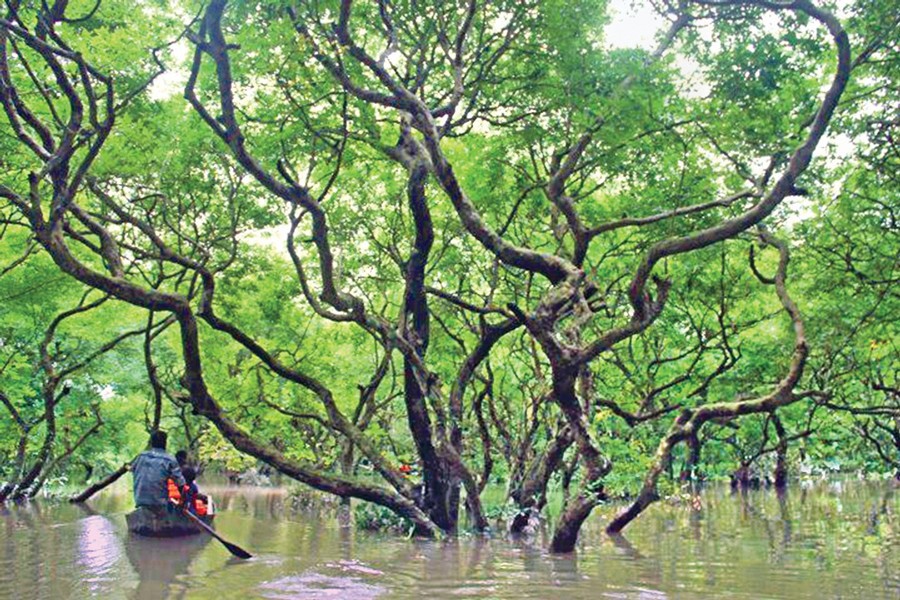A veritable natural green wall, or what environmentalists would like to call 'natural shell,' sheltering the coastal belt settlements of Bangladesh from the cyclones and storm surges, the Sundarbans is facing threats to its sustenance and growth. Consider what a havoc last year's powerful cyclone, Bulbul, could have wreaked on the coastal population had the Sundarbans not diverted and dampened its destructive force? From time to time, therefore, we need to take stock of the situation and step up efforts to maintain its intrinsic ecological balance. It has the distinction of being the world's natural heritage site endowed with and home to rich biodiversity reservoir.
Activities involving government as well as privately-run industrial projects are taking place under the ministry of environment, forest and climate change's watch. Are the relevant laws of the department of environment being strictly adhered to while setting up and running those ventures? It is common knowledge that questions have been raised from various pro-environment and right groups about these projects. The government thinks the key concerns are being addressed. But questions remain in the minds of environmental and rights groups which they press for answers. A balance needs to be struck between differing perceptions in order to reflect a pursuit of best practice methods.
The role of the private sector is not beyond question. Fishing activities using non-conventional means, plying of water transports that sometimes carry cargoes harmful for aquatic life in the rivers, various freshwater reservoirs and wetlands are but to mention a few. Oil spills from some cargo vessels have been a matter of concern. Even the seasonal tourists are hardly showing any respect for this forest when they carelessly litter its floor with non-biodegradable detritus - plastic cans, bottles, packets, you name it.
Reduced flow of water in the Padma River due to Farakka Barrage in its upstream has caused the rise in salinity in the rivers, wetlands and soils of the Sundarbans. Shrimp culture, the way it is being practised currently, does also need a rethinking as it brings brackish water into the inland freshwater reserves. These are not only causing its delicate hydro-ecology to compromise affecting aquatic life, it is also leaving its impact on the vegetations on land. The sundari tree, for example, from which the forest gets its name and fame, is now facing a challenge from a syndrome called 'top dying disease'. Similar problems are afflicting other important trees that contribute most to the composition and look of this unique mangrove forest. A correct policy to address this problem to keep sundari and other important trees in good health needs to be adopted.
Of course, the all-pervasive climate-change may also have a hand in jeopardizing the Sundarbans' biodiversity. We must take guard and provide against such a possibility. However, there seems to be no shortage of goodwill, whether at the government or at private levels, when the issue of saving the Sundarbans comes to the fore. Because, it is the only planet we have and it is the only Sundarbans we have. The Sundarbans is nothing short of the nation's lifeline. It cannot be allowed to fall into decline on our watch. Awareness must be heightened at all levels to arrive at a national consensus to save it.


